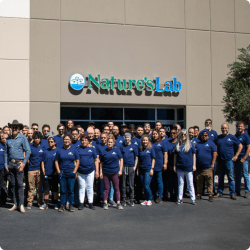

The eyes are the window to the world and the second most complex organ in the body. While our eyes have built-in systems to protect them, they are still interacting with the outside environment daily. Environmental factors such as blue light from computer screens, UV light, smoke, dust and more can impact our eyes.* Fortunately, there are various steps we can take to promote eye health and protect this important sense.*
How Our Eyes Process Light

The eyes are made up of over two million parts that work together to help us process light and color so we can see. Light passes through the cornea, which bends light to help the eye focus before entering the pupil and iris, passing through the lens, then hitting the retina. All these components control how light is filtered, focused, and processed by photoreceptors, which turn the light into electric signals through the optic nerve so the brain can process the images you see. This process is intricate and complex, and while our eyes have systems in place to protect our vision they are still exposed to light and oxygen daily, which can naturally lead to eye strain and potentially cause adverse effects such as eye strain or damage.*
Environmental Impacts on the Eyes

The light and oxygen that our eyes naturally interact with produce free-radicals, which can cause oxidative stress on the eyes.* Oxidative stress, which also occurs when cells break down, is an imbalance between these free radicals and antioxidants in the body. Antioxidants are compounds that protect the cells from oxidative stress.* When oxidative stress accelerates, it can impact all cells, including those in the eyes.* Fortunately, there are a number of precautions we can take and nutrients we can incorporate as part of a healthy diet to support eye health.*
Astaxanthin and other Eye Health Plant Compounds

There are several compounds found in nature that can help support healthy vision*, such as the following plant compounds:
Flavonoids: A diverse group of phytonutrients (plant chemicals found in almost all fruits and vegetables).
Polyphenols: Micronutrients that naturally occur in various plants. They may act as antioxidants to neutralize free radicals.* Flavonoids, for example, are a type of polyphenol.
Carotenoids: A class of yellow, orange or red pigments in plants and algae, such as carotene. Lutein and Zeaxanthin are types of carotenoids and found largely in the retina. Astaxanthin is also a type of carotenoid.
Anthocyanins: Another type of flavonoid that may act as an antioxidant.* Anthocyanins are found in cherries, berries and other fruits and are responsible for giving fruits and vegetables their vibrant purple, red and blue hues.
These compounds are packed with antioxidants and can help defend the cells, including the delicate tissues and components of the eyes, against oxidative stress.*
What is Astaxanthin?

Astaxanthin is a fat-soluble antioxidant found in red marine microalgae.* This red carotenoid is one of the most potent antioxidants found in the carotene of xanthphyll family and can help protect cell membranes from free radical damage.* Astaxanthin crosses into eye tissue, where it can help protect the retina from damage due to daily light-induced stress and strain, helping to protect the nerve cells in the eyes to promote vision health.*
Additionally, as an antioxidant, astaxanthin may promote the following:
• Skin elasticity, moisture, texture and tone*
• Defense against oxidative stress in the body*
• Healthy inflammatory response*
As an efficient antioxidant compound, astaxanthin works with vision health-supporting carotenoids, such as lutein and zeaxanthin.* Nature’s Lab AstaREAL Astaxanthin contains 6 mg of AstaREAL®, a potent, natural astaxanthin tested for strength and efficacy.* The natural astaxanthin from red microalgae has a unique structure that spans the thickness of the membrane for efficacious antioxidant support.*
Astaxanthin for Joint Health

Various studies investigating astaxanthin’s possible role in protecting against bone loss and easing inflammation in the joints have achieved positive results using a dosage with a minimum of 6 mg.
Nature’s Lab AstaREAL Astaxanthin contains 6 mg in one easy to swallow soft gel capsule. At Nature’s Lab we always choose premium raw materials for our supplements. We source our astaxanthin from a US grower whose astaxanthin has been involved in more than 150 studies.
Lutein and Zeaxanthin

Additional carotenoids found in the eyes are lutein and zeaxanthin. These compounds, like astaxanthin, help protect eyes from high-energy light waves and UV rays.* Lutein and zeaxanthin are the only dietary carotenoids that accumulate in the retina, making them important antioxidants for eye health.* Find lutein and zeaxanthin in green leafy vegetables such as kale, spinach, broccoli, peas and lettuce, or find it in Nature’s Lab One Daily and Six Daily.
Astaxanthin’s Benefits for Skin Health

Astaxanthin’s powerful antiinflammatory properties can help you achieve more glowing skin.* Oxidative stress can cause collagen to break down and be destroyed. Astaxanthin can scavenge these free radicals that lead to wrinkles and other signs of premature aging.* Astaxanthin may also lessen inflammation of the skin caused by UVB rays and promote retention of moisture in the skin.*
The Nature’s Lab Beauty & Radiance Essentials Kit includes the best products for supporting collagen production and enhancing your glow with Biotin, Hyaluronic Acid and Astaxanthin in one bundle.
Shop our products and bundles containing Astaxanthin.







